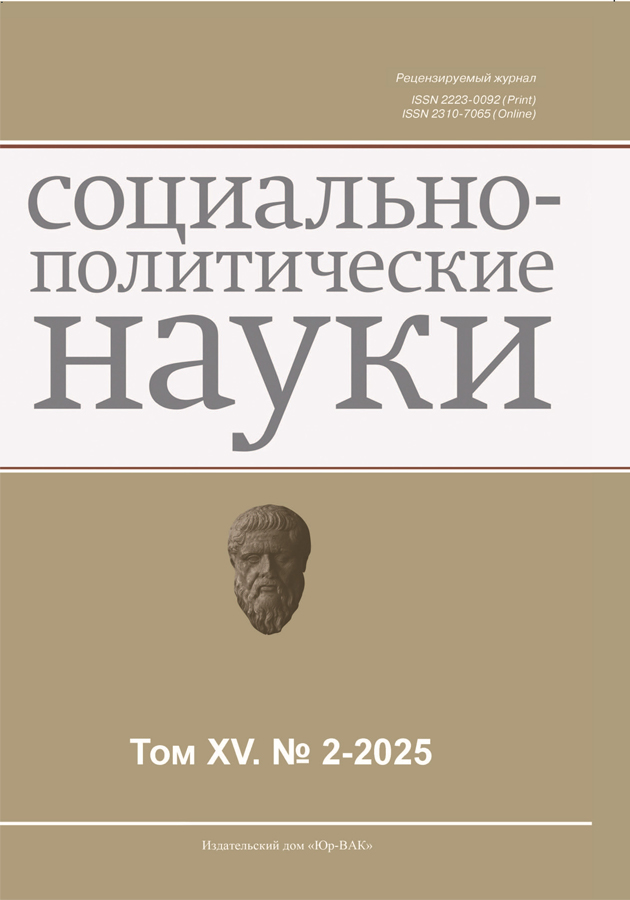State Symbols as a Tool for Forming Civil Identity: International Approaches and Practices
- Authors: Bochanov M.A.1
-
Affiliations:
- Financial University under the Government of the Russian Federation
- Issue: Vol 15, No 2 (2025)
- Pages: 60-65
- Section: Public Administration and Sectoral Policies
- URL: https://journal-vniispk.ru/2223-0092/article/view/296080
- DOI: https://doi.org/10.33693/2223-0092-2025-15-2-60-65
- EDN: https://elibrary.ru/QAOYNE
- ID: 296080
Cite item
Abstract
State symbols play a key role in the formation of civil identity, acting as a tool for the consolidation of society, the transfer of historical and cultural values and the legitimization of power. In the context of globalization and digitalization, the study of international experience in popularizing symbols is of particular importance for the development of effective strategies in education and public life. The purpose of the study is to conduct a comparative analysis of international approaches to the use of state symbols as a tool for the formation of civil identity, to identify the general principles and national features of their implementation. The study is based on a comparative analysis of practices for popularizing state symbols in various countries (USA, China, Russia, the Philippines, Switzerland, etc.), including the study of educational programs, legislative norms, digital initiatives, as well as sociological research data. The methods of interdisciplinary analysis, reliance on theoretical works and empirical cases are used. International experience confirms that state symbols retain their role as an important resource for national consolidation, providing a link between traditions and current civic values.
Full Text
##article.viewOnOriginalSite##About the authors
Maxim A. Bochanov
Financial University under the Government of the Russian Federation
Author for correspondence.
Email: max8797@list.ru
ORCID iD: 0000-0002-0802-1418
SPIN-code: 4326-4510
Cand. Sci. (Polit.); associate professor, Department of Political Sciences
Russian Federation, MoscowReferences
- Baukov A.S. Effective methods and techniques for familiarization with state symbols. Scientific Review. Pedagogical Sciences. 2020. No. 1. Pp. 12–16. (In Rus.)
- Efimov D.M. The role of state symbols in the formation of social identity of students in the context of the transformation of Russian society. Abstract
- of dis. ... of Cand. Sci. (Sociol.). Nizhny Novgorod, 2006. 29 p.
- Klepikov V.Z. Modern China: issues of education. Pedagogy. 2000. No. 5. Pp. 92–98. (In Rus.)
- Kobozeva E.V. State symbols as a means of patriotic education of schoolchildren. Bulletin of Novgorod State University. 2008. No. 45. Pp. 43–46. (In Rus.)
- Paramonova V.A. Political symbol as a means of legitimizing social space: Dis. ... of Cand. Sci. (Sociol.). Volgograd, 2002. 164 p.
- Rosenberg N.V., Karpova M.K. Symbols of state identity in the views of Russian student youth. Science. Society. State. 2024. No. 2 (46). Pp. 120–130. (In Rus.)
- Smith A. National identity. V.V. Ivanov (transl. from English). Moscow: Publishing House of the Institute of Ethnology and Anthropology of the Russian Academy of Sciences, 1998. 304 p.
- De Vera C.P. Patriotism in youth development as expressed in the singing of the philippine national anthem and flag ceremony: A case study. International Journal of Multidisciplinary Research and Publications. 2021. Vol. 4. No. 1. Pp. 91–102.
- Smith A.D. National identity. Reno: University of Nevada Press, 1991.
Supplementary files









